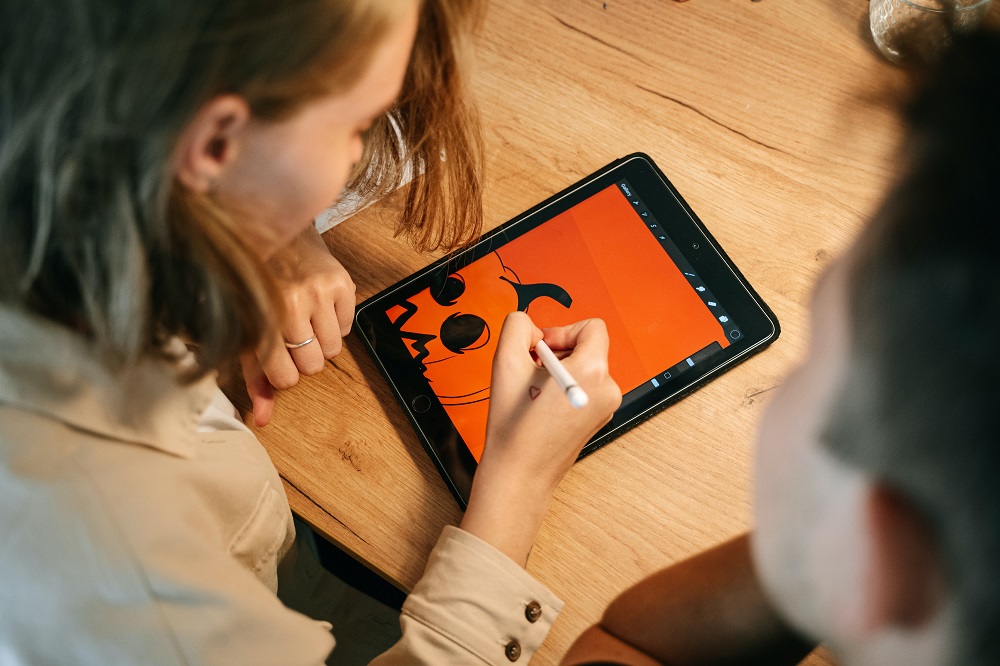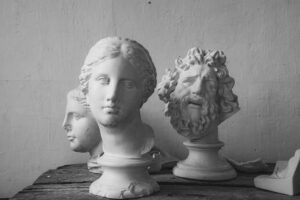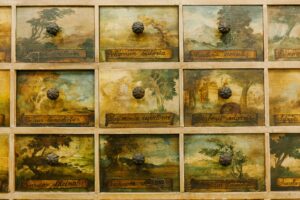Are you ready to dive into the exciting world of digital art? With the rise of NFTs (Non-Fungible Tokens) and crypto art, artists and collectors are exploring a whole new realm of creativity and investment opportunities. From virtual galleries to unique blockchain creations, these cutting-edge technologies are transforming the way we view and value art. In this blog post, we’ll explore the fascinating world of digital art, uncovering its history, current trends and future possibilities. Join us on this journey as we discover how technology is reshaping the art industry like never before and the rise of digital art!
What is NFT Art?
NFT art is a new and exciting form of digital art that allows artists to create unique, one-of-a-kind pieces that can be sold, traded, or collected.
NFTs (non-fungible tokens) are digital assets that are stored on a blockchain, which is a decentralized ledger that records transactions.
This means that NFT art is stored on a public ledger and can be verified as authentic by anyone.
NFT art is often created using blockchain-based platforms such as Ethereum or Cryptokitties.
These platforms allow artists to create and sell their artwork in the form of NFTs.
NFT art can take many different forms, including 2D images, 3D models, audio files, and even video clips.
The great thing about NFT art is that it can be easily reproduced and shared online.
This makes it easy for artists to reach a wide audience and sell their artwork without having to go through traditional channels such as galleries or auction houses.
One of the most popular ways to buy and sell NFT art is through online marketplaces such as SuperRare or Rarible.
These marketplaces allow artists to list their artwork for sale, set prices, and ship their products to buyers all over the world.
If you’re interested in collecting or investing in NFT art, there are a few things you should keep in mind.
The Different Types of NFT Art
NFT art, or non-fungible token art, is a new type of digital art that is created using blockchain technology.
NFTs are unique digital tokens that cannot be replicated or exchanged for other tokens, making them perfect for use in the creation of digital art.
NFT art can take many different forms, from traditional 2D and 3D artwork to video and audio files.
The sky is the limit when it comes to the types of NFTs that can be created, and artists are just beginning to explore the possibilities of this new medium.
One of the most exciting things about NFTs is that they have the potential to completely change the way we think about ownership and value in the art world.
Unlike traditional art, which is often seen as a status symbol or an investment, NFT art can be collected and displayed purely for its aesthetic value.
This could lead to a more democratized and inclusive art world where everyone has access to high-quality artwork, regardless of their economic status.
So far, NFTs have been successfully used to sell everything from digital paintings to GIFs and even tweets.
As the technology develops, it’s likely that we will see even more innovative and exciting uses for NFTs in the world of digital art.
Pros and Cons of NFT Art
As digital art becomes more popular, a new form of art known as NFT art is beginning to emerge.
NFT art is created using blockchain technology and can be bought, sold, or traded like any other digital asset.
While NFT art offers many benefits, there are also some potential drawbacks to consider.
One of the biggest advantages of NFT art is that it can be easily authenticated and tracked.
Because each piece of NFT art is stored on a blockchain, it can be very difficult to counterfeit or tamper with.
This makes NFT art a much more secure investment than traditional forms of art.
Another benefit of NFT art is that it can be easily sold or traded online.
Unlike traditional forms of art, which can be difficult to sell or trade, NFT art can be quickly and easily sold through online marketplaces.
This makes it a great option for artists who want to sell their work without dealing with the hassle of finding buyers offline.
However, there are some potential drawbacks to consider with NFT art as well.
One of the biggest concerns is that NFTs are not yet widely accepted by the mainstream art world.
While some galleries and museums are starting to experiment with exhibiting and selling NFTs, most still view them as a niche market.
This could make it difficult for artists who primarily create NFTs to find buyers for their work in the future.
What is Crypto Art?
Crypto art is a new and exciting way to collect and trade digital art.
NFTs, or non-fungible tokens, are unique digital assets that can be bought, sold, or traded on blockchain platforms like Ethereum.
Crypto art is often created by artists using software like Photoshop or Illustrator, and can be found on websites like SuperRare and Rarible.
Crypto art is still in its early days, but it has already caught the attention of some of the world’s top artists and collectors.
Christie’s auction house recently sold an NFT-based work of digital art for over $130,000, and more and more people are beginning to explore this new world.
If you’re interested in collecting or trading crypto art, there are a few things you should know.
First, make sure you have a secure wallet to store your NFTs. Second, familiarize yourself with the different platforms and exchanges where you can buy, sell, or trade crypto art.
Finally, don’t forget to do your research before investing in any NFTs – just like with any other type of investment, it’s important to know what you’re getting into.
The Different Types of Crypto Art

Crypto art is a new and exciting type of digital art that uses blockchain technology.
It creates unique, tamper-proof pieces of art.
Crypto art can take many different forms, from traditional paintings and sculptures to digital media.
One of the most popular types of crypto art is called non-fungible tokens, or NFTs.
NFTs are digital assets that are stored on the blockchain and can be bought, sold, or traded like other cryptocurrencies.
Because they are stored on the blockchain, NFTs are completely secure and cannot be counterfeited.
Another type of crypto art is called virtual worlds.
Virtual worlds are online spaces where users can interact with each other and purchase items using cryptocurrency.
The most popular virtual world is called Decentraland, which is a decentralized platform built on the Ethereum blockchain.
Users can buy land in Decentraland and build their own virtual homes or businesses.
Crypto art is still in its early stages, but it has already begun to take the art world by storm.
With its unique blend of security, authenticity, and scarcity, crypto art is poised to become one of the most important genres of digital art in the years to come.
Pros and Cons of Crypto Art
Crypto art (also known as NFT art) is a new type of digital art that is created and stored using blockchain technology.
It allows artists to create unique works that can be sold or traded like any other asset on blockchain.
There are many advantages to crypto art, including the ability to create truly unique and scarce works.
The lack of intermediaries such as galleries or auction houses, and the fact that crypto art can be stored securely and permanently on the blockchain.
However, there are also some drawbacks to consider, such as the volatile nature of cryptocurrency markets and the potential for fraud or scams.
Conclusion
Digital art has come a long way. We have seen the rise in popularity of NFTs and crypto art, with platforms like Ethereum.
These platforms provide an avenue for digital creators to monetize their work.
This is only the beginning of what will become a much larger industry as more artists flock to these platforms.
To showcase their artistic talents and engage with fans who are interested in investing into artworks.
The world of digital art is alive and growing, keep your eyes peeled – nobody know when something new might emerge!








